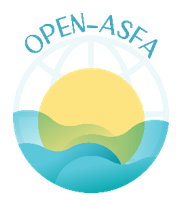Apport de la télédétection très haute résolution pour l’étude diachronique des plages de la région centre Algérienne
DOI:
https://doi.org/10.71754/instm.bulletin.v47.428Keywords:
système d'information géographique, érosion des plages, Geosensing, Beaches, Hydrodynamics, Coastal erosion, Marine, Algeria, Mediterranean SeaAbstract
The analysis and understanding of shoreline changes is one of the issues of concern for coastal decision-makers to achieve integrated coastal zone management and the implementation of rapid measures to restore the coastal equilibrium. To this end, the objective of this article is the spatiotemporal monitoring of the coastline and beaches of a region containing various maritime structures over a 15-year time series. For this purpose, we used satellite images from Google earth with a spatial resolution of 0.6 m. The methodology developed to make better use of Google earth satellite images compared to downloading methods is based on three methods either directly via Google earth, or by other software including Offline Map Maker and Smart GIS. The GIS techniques used for the processing of the downloaded images have allowed us to make a rectification of Google earth images by the elimination of the shift between its spacious backgrounds caused by the superposition of old and recent dates. In order to make a diachronic study of the beaches and a diagnosis on the historical variations of the coastline. The changes in beaches were compared to determine the evolution between 2002 and 2017. Wave energies govern the refraction-diffraction of waves and the concentration of this energy on certain areas, for which we used the high-resolution SWAN model. According to the results obtained, we found the presence of erosion/accretion on adjacent beaches, so we noticed a concordance between the distribution of wave energies and the evolution of the coastline. The maps elaborated, each representing a commune of the Algerian coast, will constitute key information to monitor, valorise and qualify the beaches.













